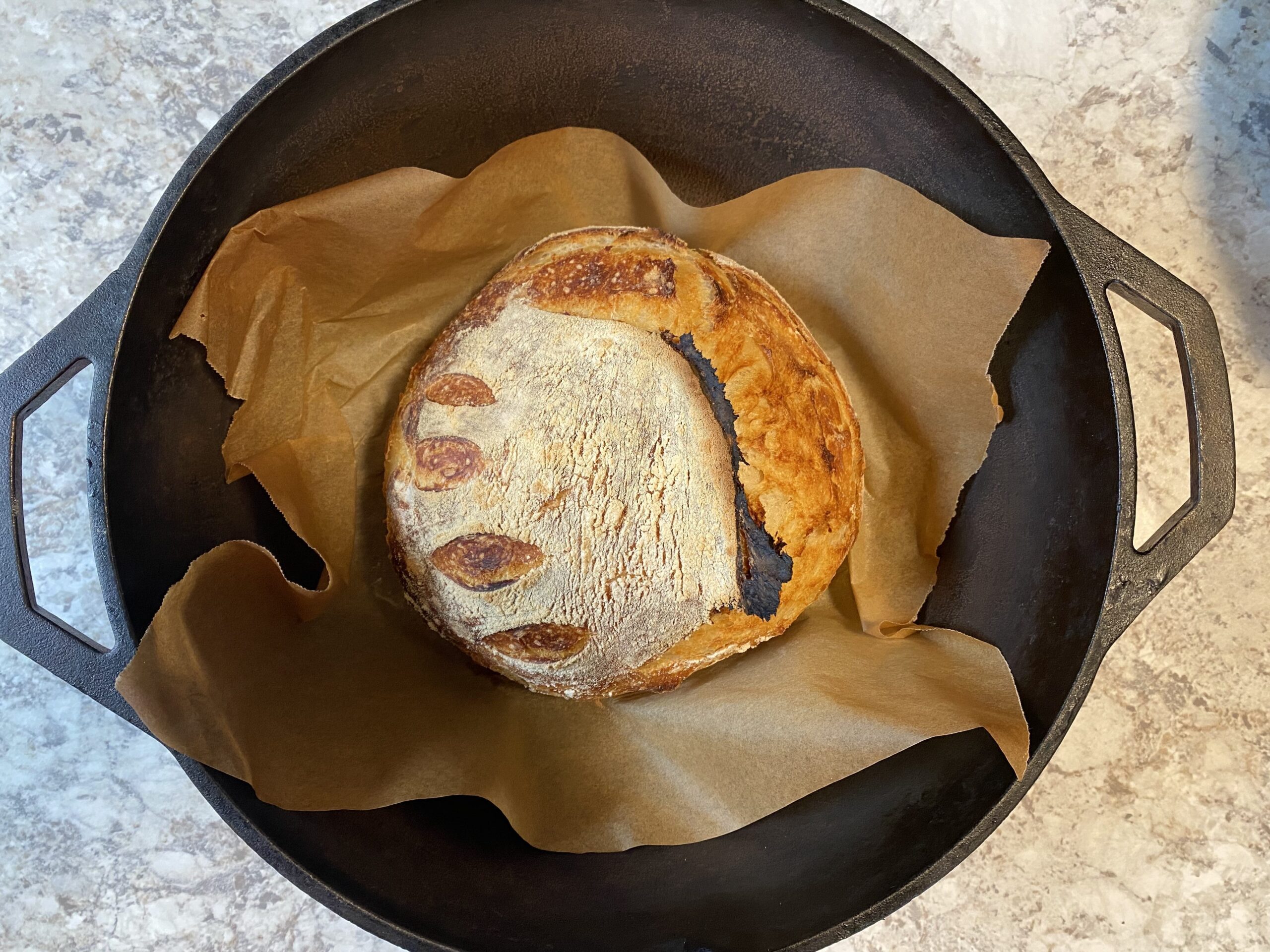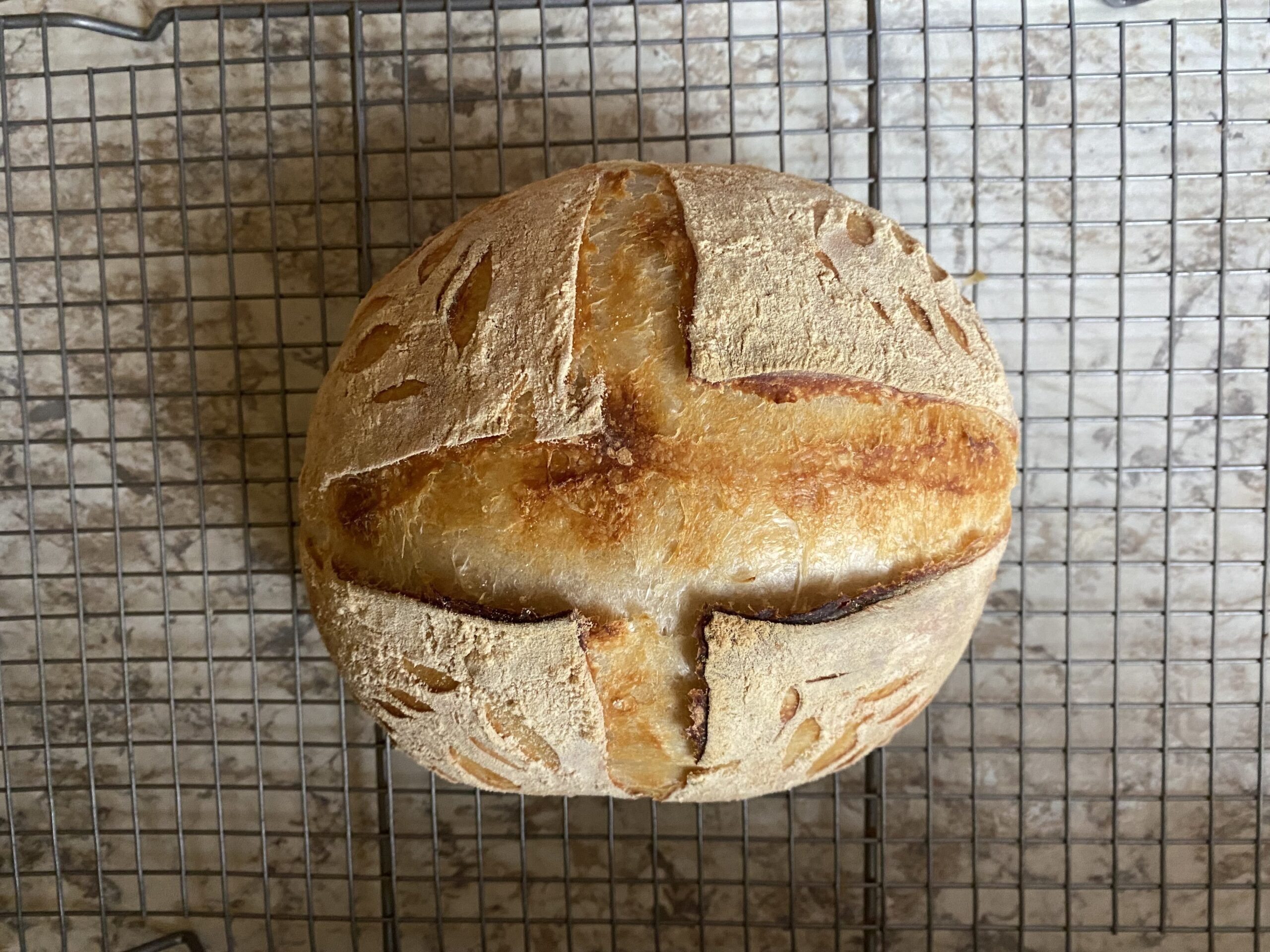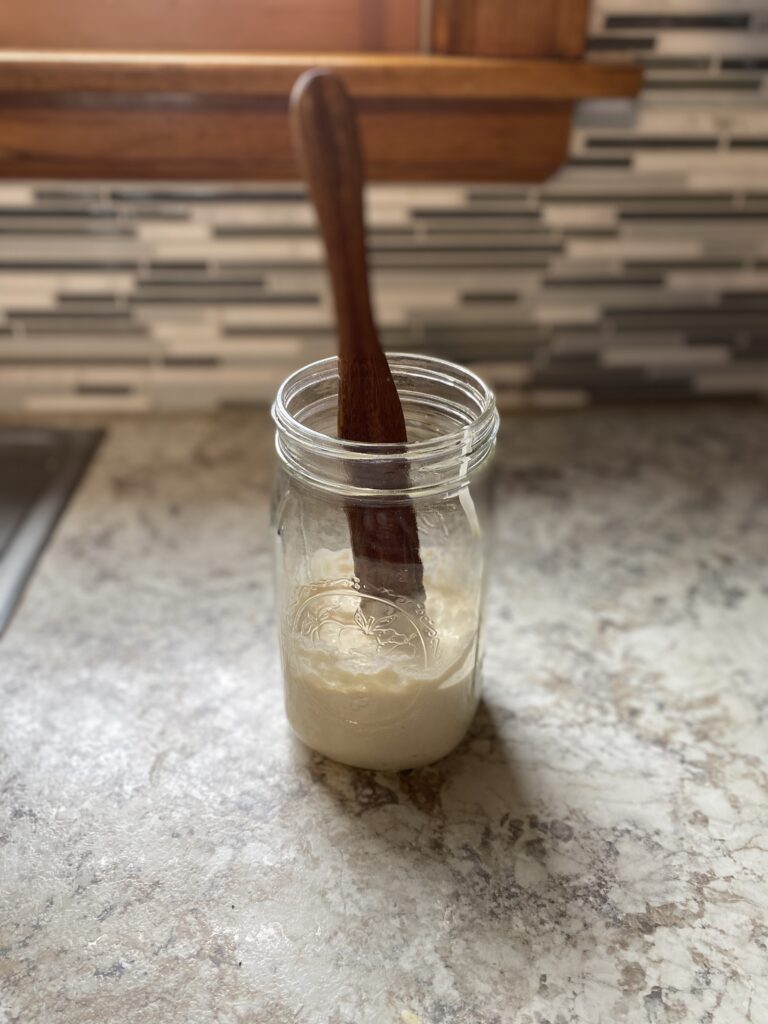
What is sourdough? When should I feed my starter? What is a starter? Is sourdough worth the process? If these are some questions that come to mind when thinking about sourdough, you are in the right place.
Basic Sourdough Vocabulary
To allow for better understanding throughout this post, let’s start with some sourdough terms and their meanings:
- Active Starter- also known as starter, is fermented flour and water that is live with bacteria and wild yeast. This is what is used when baking breads.
- Discard- also known as nonactive starter, is fermented flour and water that is not live and active.
- Feeding- A fresh mixture of flour and water that is mixed with discard to bring the starter back to life.
- Proofing-the final rising process of the dough
- Scoring- incision on dough after the final proofing process
- Banneton- the basket that the bread proofs in
What is Sourdough?
Sourdough is bread that is made with 3 simple ingredients that can be found in any kitchen. Water, flour, and salt. The bread rises with starter that is used in place of conventional yeast. That starter is made with fermented flour and water. This starter then becomes “active” with bacteria and yeast by letting it sit on your counter.

What do I need to start making Sourdough?
To start making sourdough, you either need to buy some sourdough starter from someone you know or start your own starter. If you are looking to start your own starter, you can find the process on how to do so here.
For a complete list of all of the tools you may need, head on over to this post to learn more.
When do I feed my starter?
This is dependent on a few different factors. A starter can take anywhere from 4 to 12 hours to become active and at its peak. The temperature of your home and where you keep your starter will determine how fast it grows. If you keep your home cooler, it will probably take closer to that full 12 hours. If you are wanting to speed that process up, placing it in your oven with the light on

How do I know when my starter is ready to be used?
Starter is ready to be used when it is bubbly and active. If your starter has doubled in size since feeding it, it is most likely ready to be used. To be sure, you can also do the “float test”. To do this, fill a bowl with some water. Take a spoon full of starter and drop it in the water. If the starter floats, it is ready to be used. If it sinks to the bottom, give the starter more time to feed and try again in a couple hours.
What do I do with my starter after I have used it?
If you are not planning on baking anything in the following days, simply screw the lid on the jar and place it in the refrigerator. When you are ready to use your starter again, take your starter out of the refrigerator (I like to let mine sit out and come to room temp) and refeed so it becomes active again. Continue to use like you have previously done.
If you are planning to make another recipe with your starter, feed it again and let it sit on your counter top to get nice and active.
What is this layer of liquid that’s formed on top of my starter?
If your sourdough has this liquid on top, don’t panic! You did not kill your starter. This layer of liquid is called “hooch” and it is alcohol and water formed by the yeast in your starter. It is usually harmless but it does tell you that you need to feed your starter. This liquid can either be poured off or you can stir it back in, either is okay.
Is making sourdough worth it?
In my opinion, yes! The satisfaction that comes with baking a beautiful loaf of bread to enjoy is always worth it. The most challenging part is starting the starter but if you can purchase some from someone, the hardest part is complete.

Leave a Reply